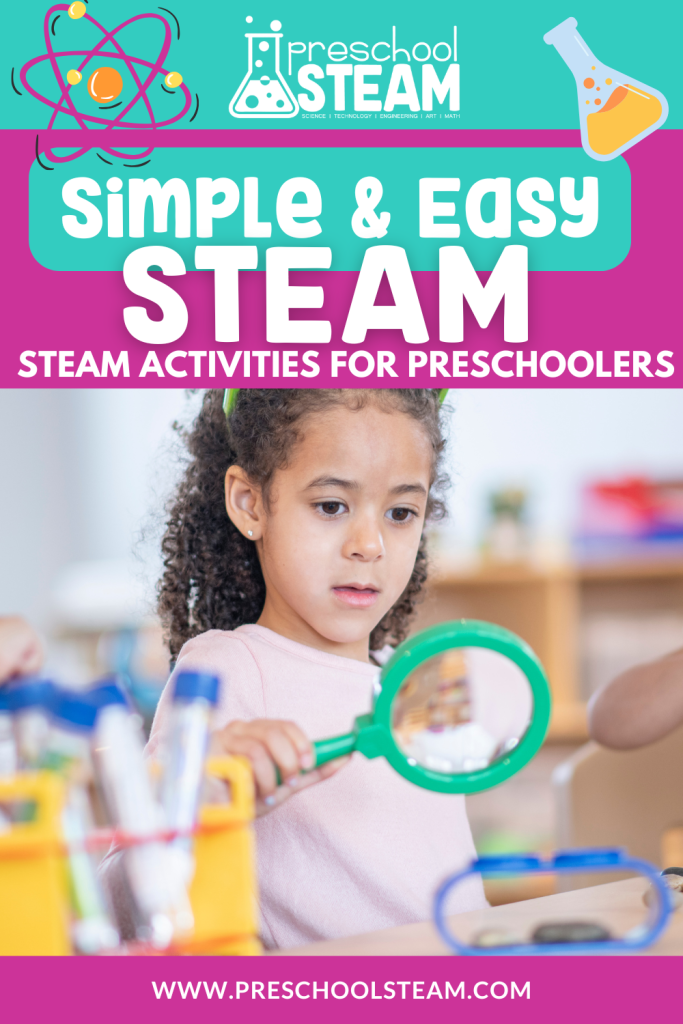Is your classroom designed to spark curiosity, creativity, and independent discovery? A well-organized STEAM environment invites young learners to explore, experiment, and engage in hands-on learning.
The good news?
You don’t need expensive materials or a total classroom overhaul—a few simple tweaks can transform your space into a STEAM wonderland.
Here are four easy, low-cost hacks to create an engaging STEAM classroom that fosters exploration and problem-solving.

1️⃣ Create an “Invitation to Play” Table
Why it Works:
An “Invitation to Play” table encourages open-ended exploration and self-directed learning by providing a rotating selection of materials that spark curiosity.
How to Set It Up:
- Choose a low table or designated play area in your classroom.
- Stock it with open-ended materials such as tubes, pom-poms, measuring cups, loose parts, and natural items.
- Rotate materials weekly to introduce new themes and challenges.
Quick Tip: Pose a question or challenge to spark inquiry. For example, “Can you build a bridge that holds a toy car?”
2️⃣ Use Vertical & Floor Spaces for Learning
Why it Works:
Learning doesn’t have to happen just at tables! Walls, windows, and even the floor offer creative opportunities for hands-on STEAM engagement.
Ideas to Try:
- Wall Ramps: Tape cardboard ramps to the wall for an interactive physics experiment exploring slopes and speed.
- Window Exploration: Use prisms and mirrors on windows to experiment with light and shadows.
- Floor STEM Challenges: Designate an area for building with blocks, creating marble runs, or testing different surfaces for toy car races.
Quick Tip: Use painter’s tape to create temporary learning zones on walls or floors—easy to clean up and change!
3️⃣ Organize a STEAM Cart for Easy Access
Why it Works:
A STEAM cart puts hands-on learning materials at kids’ fingertips, making it easy to integrate STEAM into daily routines.
What to Include:
- Magnets & magnetic wands for early science exploration
- Pipettes & measuring cups for water-based experiments
- Recycled materials (cardboard tubes, bottle caps) for engineering challenges
- Simple tools like flashlights, balance scales, and tweezers
Quick Tip: Label materials with pictures and words to help children find what they need and promote independent learning.
4️⃣ Make Space for Process Art & Experimentation
Why it Works:
STEAM learning isn’t just about structured experiments—creative expression plays a big role, too! A designated process art station allows kids to freely create, explore, and experiment.
How to Set It Up:
- Provide drop cloths and open-ended art tools like brushes, rollers, sponges, and unconventional materials (bubble wrap, feathers, sticks).
- Offer a variety of materials, such as watercolors, clay, and collage supplies to encourage multi-sensory exploration.
- Display children’s work to celebrate creativity rather than focusing on a “perfect” finished product.
Quick Tip: There’s no “right” way to create—encourage children to focus on the process, not the outcome.
A Classroom Designed for STEAM Success
A well-designed STEAM classroom doesn’t have to be complicated or expensive. By making small changes—like adding an Invitation to Play table, using vertical spaces, setting up a STEAM cart, and encouraging process art—you create a dynamic learning environment where children can explore, experiment, and thrive.
Ready for More Play-Based STEAM Inspiration?
Looking for ready-to-use STEAM lesson plans that make learning hands-on and engaging?
Join our Preschool STEAM Pathways membership for exclusive activities, guides, and resources to bring STEAM to life in your classroom.

Leave a Reply